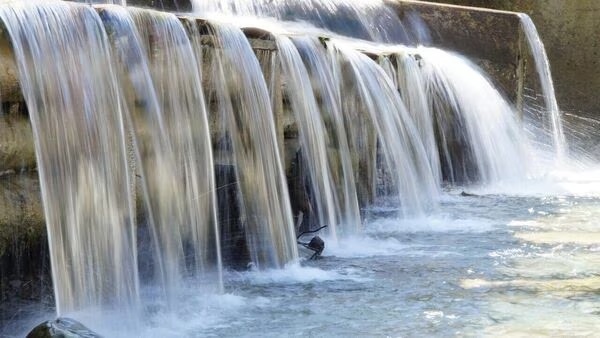- Shahpur Kandi barrage completed after long delay to divert water flow to IIOJ&K
- 1,150 cusecs water of Pakistani share will now benefit Kathua, Samba districts: Indian media
ISLAMABAD: India has stopped the flow of the Ravi River to Pakistan after the completion of Shahpur Kandi barrage, situated on the borders of Indian Punjab and the state of Illegally Occupied Jammu and Kashmir, as per Indian media reports.
According to a report in India Today, the allotted 1,150 cusecs water of Pakistani share will now benefit the region of Indian-occupied Jammu and Kashmir (IIOJ&K). The water will be benefiting 32,000 hectares of land in the Kathua and Samba districts.
India since long has been committing the water terrorism agenda against Pakistan and now executing the latest project of Shah Kandi barrage that would supposedly be used for ‘irrigation and hydro power generation’ but at the cost of blocking the water flow towards Pakistan.
India already has constructed many dams like Bhakra Dam on Sutlej, Pong and Pandoh Dam on the Beas and Thein (Ranjitsagar) on the Ravi.
The Indus Waters Treaty is a water-sharing agreement between India and Pakistan, arranged by the World Bank, signed on September 19, 1960.
The treaty divides the rivers into two categories: Eastern Rivers (Sutlej, Beas, and Ravi) which are allocated to India, and Western Rivers (Indus, Jhelum, and Chenab) which are allocated to Pakistan.
According to reports, India has marked the completion of the Shahpur Kandi Barrage on the Ravi River, stopping the water flow to Pakistan, and signifying a strategic shift in water management on February 25, 2024, according to various media reports.
This long-awaited project, overcoming delays spanning over three decades, now redirects 1,150 cusecs of water towards irrigation purposes in the Kathua and Samba districts of Jammu and Kashmir.
This development is reportedly going to bolster agricultural opportunities in the region while also marking a significant change in water allocation in India.
This will translate into the Jammu and Kashmir region now benefitting from the 1150 cusecs of water that was previously allocated to Pakistan.
The water is expected to be utilised for irrigation purposes, benefiting over 32,000 hectares of land in the Kathua and Samba districts. The Shahpur Kandi Barrage is a dam on the Ravi River in Pathankot district, Punjab, India.
Previously, under the 1960 Indus Water Treaty, a portion of the Ravi River’s water flowed into Pakistan via the Lakhanpur dam. However, the Shahpur Kandi Barrage effectively ceases this flow, allowing India to fully utilize its allocated share of the river’s resources.
This move aligns with the treaty, which grants India exclusive control over the Ravi, Sutlej, and Beas rivers, while Pakistan manages the Indus, Jhelum, and Chenab.
In 2018, December the Central government approved the Shahpur Kandi Dam project on the River Ravi in Punjab.
The Shahpur Kandi Barrage project was incepted in the 1950s, but construction did not begin until 1992. The project was originally supposed to be completed in 2002, but it was delayed due to many factors, including funding issues, land acquisition problems, and environmental concerns. The project was finally completed in 2022.
Indian media reported that Shahpur Kandi dam completion allows India to make maximum use of the River Ravi water previously flowing towards Pakistan from the Lakhanpur dam.
It is pertinence to note that former Indian Prime Minister Narsima Rao laid the foundation stone for the Shahpur Kandi in 1995 and remained disputed for almost over four and a half years.
Earlier, addressing the UN Security Council, Pakistan Permanent Representative in the United Nations Ambassador Munir Akram said Pakistan aims to reinvigorate the Indus River basin which provides food security to over 225 million people.
Pakistan has called for strict implementation of the 1960 Indus Waters Treaty to address the looming water crisis. He said that to this end, Pakistan has launched the multi-dimensional Living Indus projects.























